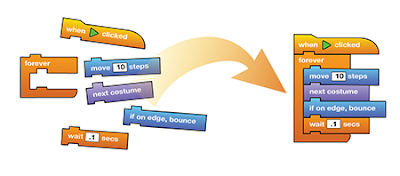Table of Contents
The Maker Mom
12/03/13
Tynker is one of a slew of new programs to help kids learn to computer programming. Many of these new tools don’t teach kids to code per se- they’re not actually using Java or C++, however, they teach kids to think like coders. Tynker stands out from other programs, even ones we’re fond of, like Scratch because of the tutorial that comes with the home version. More about that in a minute.
Tynker is a browser-based program with a colorful, visual platform (again like Scratch). Kids use pre-created blocks of code to puzzle together games, stories, animated greeting cards and whatever else they can dream up.
The colorful blocks help the child understand the logic of programming without having to focus on the more frustrating syntax, the rules and symbols, of programming. You’ll be amazed at what your child can create even as a beginner.
I mentioned that Tynker has two versions:
Tynker for Schools
This free version has special features like management tools for educators and unique editions to suit specific needs, recommended for kids in grades 3-8.
Tynker for Home
With 16 tutorials to help your child get up and running, this $50 package is worth the fee in a household with non-coding parents.The tutorials allow your child to work independently and gain expert programmer status in your house. The self-paced tutorials include guided lessons, puzzles, quizzes, challenge missions and training videos on topics like vector and pixel drawing, encapsulating code, and handling user input with conditional logic. The lessons start with simple projects and build up to more complex ones. It can take up to 16 weeks to complete the course, but if you’re home over winter break I suspect your child may finish up more quickly.
In addition to the Introduction to Programming course, another unique facet of Tynker is its physics engine. This allows animations that simply can’t be done with other drag and drop programming options–maybe it’s a case of getting what you pay for.






